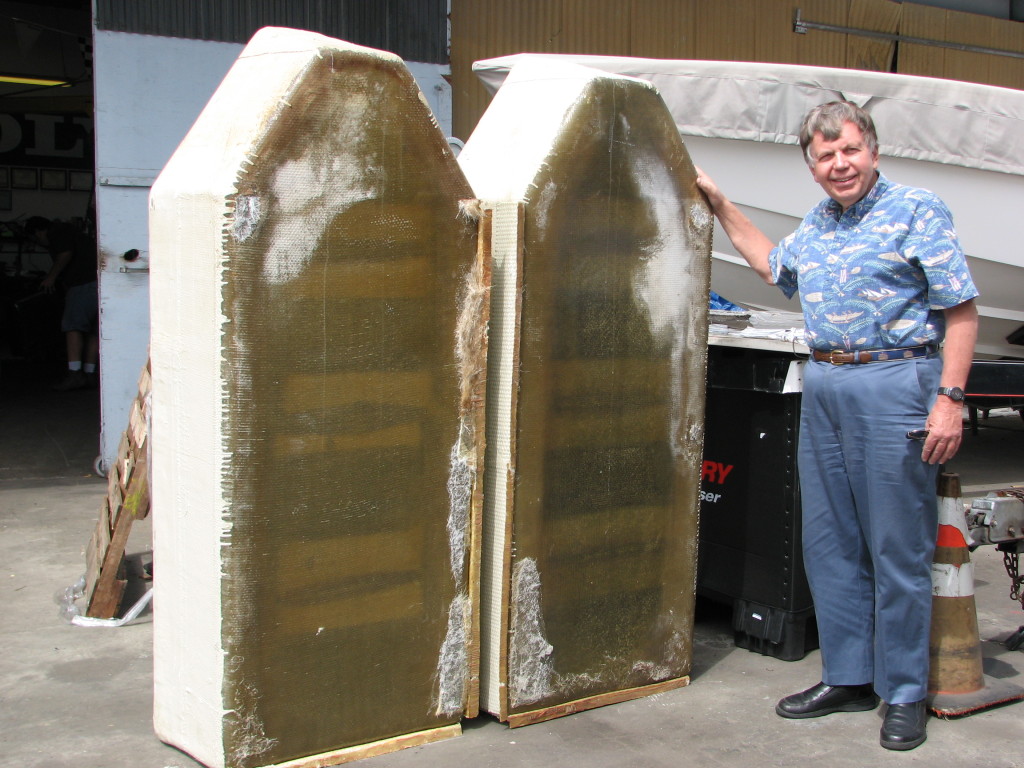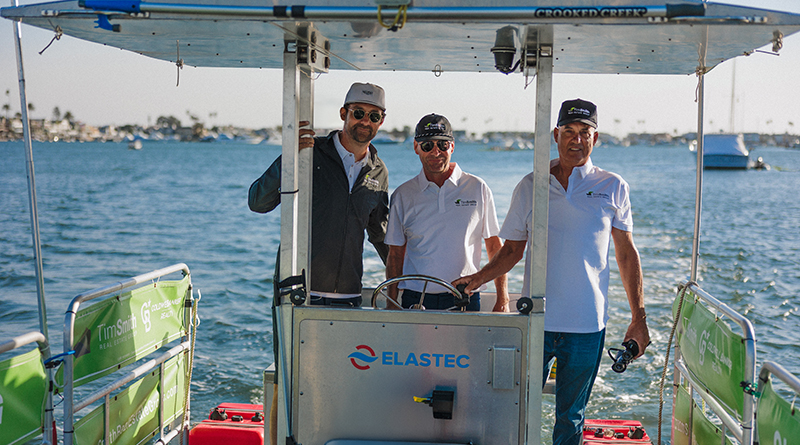When the Renewable Fuel Standard (RFS) introduced a mandated 10 percent ethanol addition to gasoline (E10), Arv and I knew we – and our boat – were in trouble. We had owned our beloved 1979 classic Hatteras motoryacht for years, having shipped it cross-country to San Diego when we moved west.
One luxury feature in older Hatteras, Bertram and Chris Craft yachts – fiberglass fuel tanks – placed them in grave danger from the ethanol mandate. Ethanol slowly dissolves fiberglass, softening and eroding these fuel tanks, and creates a black gunk that accumulates on gasoline-powered engine valves and intakes, effectively destroying engines. Ethanol also damages engine fuel fittings, gaskets, filters and fuel pump diaphragms, leading to gasoline leakage, build-up of bilge fumes and, potentially, explosions.
We’ve heard the warnings and lobbied against the mandate, but the Midwestern corn lobby, with its generous campaign contributions to elected officials, is near impossible to beat. The ethanol requirement went into effect about 2005.
As we contemplated on what to do, we read numerous reports in the boating press about boat explosions and fires linked to ethanol.
We were stuck. Our Hatteras’ tanks were half-full of pure gasoline, but we couldn’t buy more. Without fuel, we couldn’t operate our boat; we didn’t want to see her atrophy into a dock queen. Although the Pacifier was in mint condition for her age, we couldn’t sell her.
As she sat in her slip, we gathered more information over the next year. Hatteras eventually issued a letter to owners warning us not to operate our boats with currently available gasoline without replacing the fuel tanks.
What began as a premium feature, preventing rusting metal tanks, evolved into a liability.
Our choices devolved to scrapping the boat, which we both opposed, letting her rot at the dock with decomposing fuel or replacing her fuel tanks plus any engine and generator fittings, hoses, filters and gaskets vulnerable to ethanol degradation.
Even though we were already considering buying a diesel-powered boat, after much angst we chose to replace the fiberglass tanks with custom-made aluminum tanks, along with essential engine and generator accessory parts. Because the tanks were built into wooden cabinetry under our master stateroom bunks, the job required extensive skilled carpentry.
We understood replacement would be expensive, but not quite how costly. Our bill at the boatyard was about $20,000, with another $5,000 for additional parts and materials for Arv to complete the work.
Why is this old history relevant now?
With pending requirements to increase the ethanol mix to 15 percent (E15), we’re confronting the same problems: changing out vulnerable engines and components to tolerate the higher alcohol content of E15. Engine and boat builders redesigned their products to accommodate E10, but not E15.
While our current diesel-powered boat is not affected, our lightly-used dinghy outboard, built to E10 standards, will likely have to be replaced or rebuilt at unknown cost, just to satisfy the corn lobby’s greed.
Where does this end?
Ethanol is well documented as hazardous to marine engines. It’s also hostile to classic cars, lawn mowers, leaf blowers and other products using gasoline-powered engines.
In an era of dire famines and worldwide food shortages, we’re burning costly, essential food as fuel when non-food biofuel alternatives are available. Use of corn for ethanol has driven up prices for animal feeds and for corn-based food staples throughout the U.S., Mexico and Central America. Prohibitively high corn prices are often cited as contributing factors in the flow of immigrants across the U.S. border as desperate people can no longer feed their families
It’s past time to return common sense to fuel production.
(Capt. Nicole Sours Larson photo)








12 Responses
No regulation prevents a consumer from buying ethanol-free gasoline.
Can not buy it around sw ohio that I can tell
A gas station in Newport, Ohio, across the river from St. Mary’s, West Virginia has ethanol-free. Google is your friend. Hopefully everyone can readily find a similar station. Yep, money talks, and common sense walks.
If common sense was a factor we wouldn’t be putting ethanol into our fuels.
Cannot purchase no-alcohol in the DC area.
https://www.pure-gas.org/extensions/map.html
If you can find gasoline without it ?
If you can find it costs considerably more than fuel with ethanol, just another factor in the continuing boondoggle, how much more are we going to waste perpetuating this farce!
Wrong! A myriad of state, local, and federal regulations and hidden cap & trade taxes effectively kill any opportunity for many people to buy non-ethanol or E0 gas reasonably without driving great distances of paying very high per gallon rates. It is almost completely impossible to purchase E0 gas in California, Nevada, Arizona, New Mexico, Long Island, DC, New Jersey, Conn, Rhode Island, Mass, metro St Louise, and metro Chicago. For the rest of the country you can locate E0 gas at Pure-Gas.org which lists every known source of E0 gas in the US and Canada.
ethanol very bad for airplanes as well. at least when the boat motor quits it still floates.
Aren’t these Hatteras’s running Diesels?
Our Hatteras had gasoline engines, hence the problem. — Capt. Nicole Sours Larson